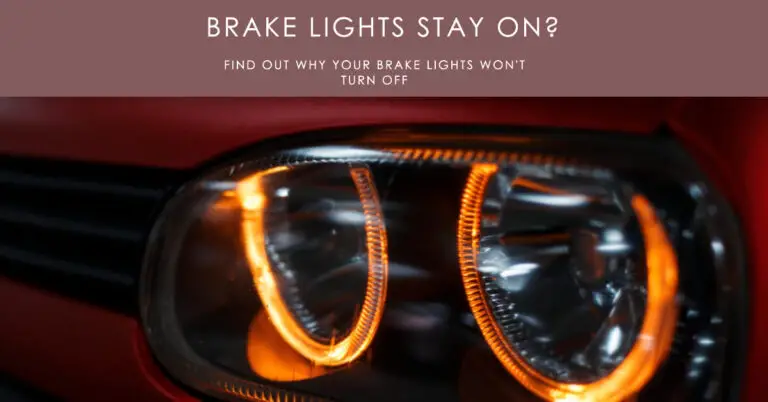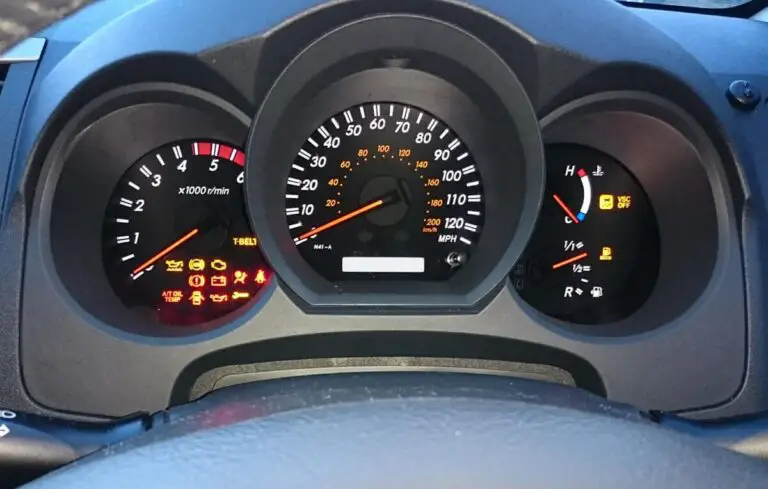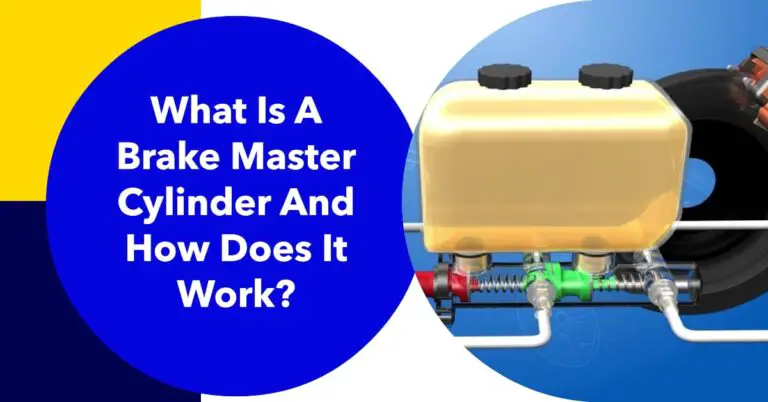Tire Sidewall Damage: How Much is Too Much Before Replacing Your Tire?

Have you ever noticed damage on your tires’ sidewalls? Many drivers overlook sidewall damage, assuming it’s just superficial. But is it safe to drive with tire sidewall damage? And when do those slashes, cracks, and bulges mean it’s time to replace your tire?
I’ll walk you through everything you need to know about identifying tire sidewall damage, assessing if it’s safe to drive on, when it can or can’t be repaired, and how to tell when sidewall issues mean it’s time for new tires.
Specifically, we’ll cover:
- What is tire sidewall damage and what causes it
- Recognizing different types of sidewall damage
- The safety risks of driving on a damaged tire
- Whether sidewall damage can be safely repaired
- Signs your tire sidewall is damaged while driving
- What to do if you have tire sidewall damage
- Tips to prevent tire sidewall damage
- When you need to replace tires due to age or wear
- Replacement options when you have a damaged tire
Table of Contents
What is Tire Sidewall Damage and What Causes It?
Tire sidewall damage refers to any type of cut, puncture, cracks, bulges or other degradation to the tire’s sidewall – the area between the tread and rim.
Sidewalls are more vulnerable than the tread which is reinforced for contact and friction with the road. The sidewall supports the vehicle’s weight and allows the tire to flex over bumps and potholes. It’s composed of specialized rubber and fibers engineered to withstand expansion.
Common causes leading to tire sidewall damage include:
- Hitting curbs or debris: Sideswiping curbs when parallel parking is a prime cause of sidewall abrasions, cuts and bulges. Debris like nails or shards of glass can become embedded.
- Potholes: Hitting potholes puts intense stress on tires and wheels. The sidewall bears the brunt, causing bubbles, punctures or bent rims.
- Improper inflation: Under-inflated tires causes excessive flexing that deteriorates sidewalls. Too much pressure also weakens them over time.
- Wear: Sidewalls weaken naturally over time, becoming more prone to damage from road hazards.
While the tread mainly impacts traction, damaged sidewalls can lead to blowouts and other catastrophic tire failures. As the tire’s support structure, sidewalls merit more vigilance than they typically receive.
Identifying Different Types of Tire Sidewall Damage
Not all tire sidewall damage is obvious at first glance or equally concerning. Here are some common types of sidewall damage and what signs to inspect for:
Bulges
Bulging areas that protrude slightly or bubble out significantly indicate serious structural weakness. This occurs when the inner ply cords rupture due to impact or excessive flexing. Even minor bulges require immediate tire replacement.
Cracks
Shallow cracks in the rubber may not penetrate deep initially. But they expand over time and flexing cycles, allowing air seepage or further tearing. Think of it like cracks spreading across weak ice.
Punctures
Nails, glass and other debris can become embedded in sidewalls. Any puncture exposing ply or cord fibers necessitates replacement, unlike tread punctures which may be patched depending on size, depth and position.
Abrasion
Scuffing and scrubbing against curbs results in worn areas and damage to the outer rubber. Deep abrasions into the sidewall’s inner layers will require replacement.
The type and extent of damage will determine if it’s safe to drive with extra vigilance to the nearest tire shop, or so severe the tire should be immediately replaced.
Is it Safe to Drive on a Tire with Sidewall Damage?
Driving any distance on a damaged tire sidewall risks a blowout or further sidewall separation. However, if you have no choice, here are some guidelines for when it may be possible:
- Bulges: Never drive on a bulging tire. The structural damage is too severe. Change to your spare immediately.
- Superficial cracks: Shallow surface cracks may be carefully driven short distances to get repaired or replaced. Ensure tires are properly inflated.
- Punctures: A sidewall puncture necessitates an urgent replacement. Only drive cautiously on a punctured sidewall if essential to reach a tire shop.
- Abrasions: If the cord or ply layers aren’t exposed, you can likely drive short term to get it replaced. But extensive abrasions into those structural layers mean replacing it before driving.
Even if the tire looks okay and is holding air, sidewall damage can lead to a blowout. Driving at high speeds with any sidewall damage significantly increases safety risks. Make tire replacement a top priority.
Can Tire Sidewall Damage Be Repaired?
Many drivers wonder if tire sidewall repair is an option when damage is detected. Unfortunately the answer is nearly always no.
Due to the forces exerted on sidewalls, they must flex and compress enough to withstand potholes and curb impacts without failing. Any damage or adulteration can severely undermine the engineered strength of the cords and plies.
For this reason, tire manufacturers prohibit repairing sidewall damage. No tire shop will or should repair sidewall punctures, cracks, bulges or cuts. Complete tire replacement is mandatory.
The one exception is minor aesthetic scratches or scuffs not through the top rubber layer. These can be lightly sanded or buffed for appearance without safety concerns. But any deeper sidewall repairs compromise integrity and should be avoided.
Signs That Your Tire Sidewall Is Damaged
Sometimes sidewall damage remains unseen until you remove the wheel for inspection. But often there are subtle clues manifesting when driving:
- New vibration, wobbling or pulling: If an undamaged tire suddenly feels unbalanced or unstable, closely inspect its sidewalls. Even a small bulge or puncture can make it wobble.
- Air leaking: Gradual or sudden air loss likely signals a developing crack or puncture wound. These will only worsen without replacement.
- Visible bubbles: Obvious protruding bubbles appearing on sidewalls means immediate tire replacement is critical.
Don’t ignore these warning signs. Safely pull over as soon as feasible to inspect sidewalls for any newly formed damage. Caught early, a tire shop may spot-repair temporary leaks. But large bubbles or major vibration issues likely indicates the tire is too hazardous to drive on.
Steps to Take When You Have Tire Sidewall Damage
If you detect or suspect sidewall damage, here are the smart protocol steps:
- Safely pull over at your earliest opportunity when symptoms appear while driving. If a blowout or full flat already occurred, stop cautiously while avoiding hazarding other traffic.
- Inspect all sidewalls for visible damage like bubbles, cracks, cuts or punctures. Look inside the wheel lips as well.
- Have any questionable tires inspected by a tire shop. Describe symptoms exactly. For extensive damage, ask if it’s savable to limp to the shop or if it requires mobile repair.
- Replace any damaged tires immediately. Make this top priority once sidewall damage is confirmed, including ordering any out-of-stock sizes if required.
Following these steps minimizes risks from compromised sidewall integrity. Stay alert for symptoms developing while driving. Make safety the #1 concern when evaluating sidewall damage severity.
How to Prevent Tire Sidewall Damage
While running over road debris or swiping curbs can seem almost unavoidable, you’re not powerless to prevent tire sidewall damage. Here are some precautionary maintenance tips:
- Maintain proper inflation: Check tire pressure at least monthly and top off to vehicle or tire specifications. This prevents excessive flexing and weakness.
- Inspect frequently: Any time you add air or perform vehicle maintenance, take a few minutes to examine tires all around. Look for embedded objects or new cracks.
- Rotate tires: Regular tire position rotation helps them wear evenly. Don’t ignore rear tires once front ones need replacement.
- Park carefully to avoid curbs: Curb scrubs account for many pesky sidewall abrasions that later worsen. Leave ample room when parking near curbs.
An ounce of prevention truly pays off when it comes to costly tire damage! Make frequent inspections and optimal inflation part of your routine.
When Do I Need to Replace My Tires?
While we’ve covered immediate replacement need for damaged tire sidewalls, consumers also wonder when general tire wear warrants new tires:
- Tread depth: Tires should get replaced when they reach 2/32nds of an inch of remaining tread depth. Legally worn tires with less than this have severely compromised wet weather traction and hydroplaning resistance.
- Visible cracking: Extensive cracking on the tire exterior or sidewalls indicates rotting rubber. These weak areas can fail during expansion from impacts or potholes. Don’t wait for bulges or bubbles.
- Tire age: Most tire manufacturers recommend a maximum lifespan around 6-10 years. Slow leaks, lack of grip and faster wear increase beyond this time frame as rubber bonds deteriorate. Date codes stamped into sidewalls indicate age.
In a pinch you can sometimes move very worn tires to non-drive wheel positions briefly. But for confidence on wet roads or emergency maneuvers, invest in new tires before pushing to the last thousand miles.
Options for Replacing a Damaged Tire
When tire sidewall damage or worn tread means used-up rubber, what are your replacement options?
- Buy a brand new, matching replacement tire as ideal solution for predictable handling and tread life across all wheels.
- If other tires have ample tread, consider moving a full-sized spare to active duty as budget fix. Ensure spares are same size/load rating.
- In a pinch, a temporary spare donut can limp you to the tire shop. These are only intended for emergencies due to size/speed limitations.
When replacing less than a full set, have the shop fit and balance the new tire on same axle position as old one. Avoid mixing nearly bald with new tires on drive axles.
And don’t forget to properly fix or replace punctured spares moved to the wheel, or they’ll leave you stranded the next time!
Staying Safe with Good Tires is a Priority
As the sole contact patch with the road, tires serve a life-critical role. But their sidewalls see less inspection love than flashy tread. This leaves hidden damage lurking that can lead to catastrophic blowouts.
I hope this overview has helped explain the urgency of addressing tire sidewall damage promptly. Now you know what symptoms to watch for, what constitutes risky versus reparable harm, when to seek immediate replacement, and what maintenance prevents damage in the first place.
Please share this article if you found it useful. Drive safely out there by showing your tire sidewalls some attention!







